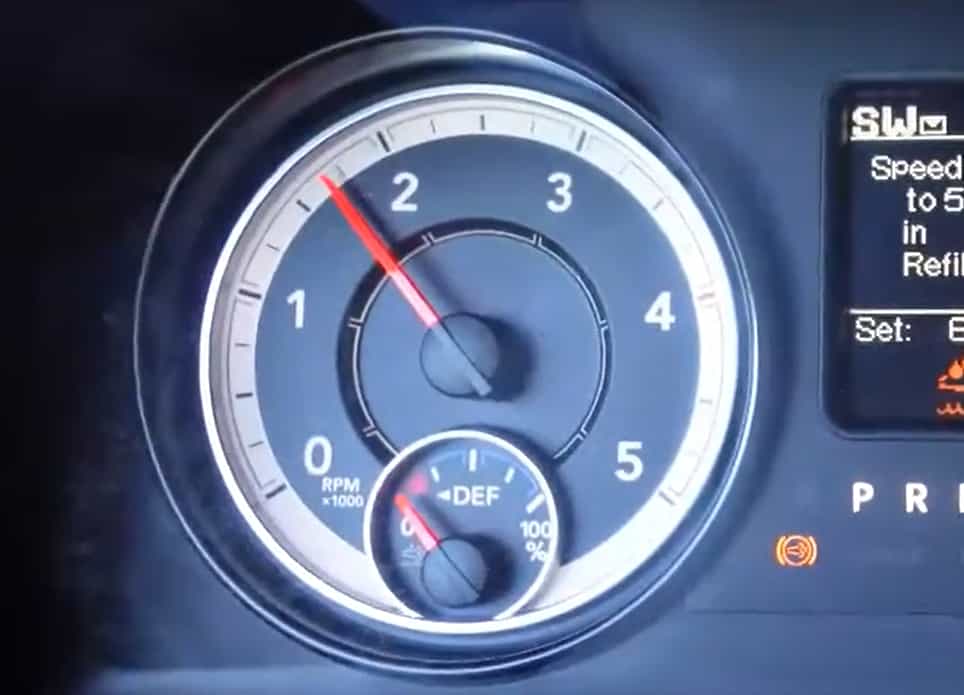Do you encounter an issue with your DEF gauge not working?
This can be quite an inconvenience since you rely on it to ensure the peak performance of your vehicle. Thus, if there are some faults with your DEF gauge, it helps to know what you can do to get it fixed.
Today, we will talk more about the problems that come with the DEF gauge and what you can do to get these issues sorted out. Let’s get right into it.

DEF Gauge Not Working: Causes
Your diesel exhaust fluid or DEF is designed to help minimize pollution in many diesel engines. This is injected straight into the SCR system, which is why it is essential to keep the quality in good condition to ensure your equipment’s peak operation.
Now, when the DEF comes with a poor quality, this can lead to serious damage and even equipment failure. Moreover, it can even void your manufacturer’s warranty. Thus, there are possibilities of massive repair costs.
When your DEF has a poor quality, there are increased chances of DEF usage, as well as the likelihood of your DEF being less effective. Equipment failure may also arise, as well as component damage and SCR system malfunctions.
There are many types of issues that can happen to your diesel exhaust fluid, which may also impact the performance of your DEF gauge.
For instance, crystallization may happen, and this may be due to hard water top-ups, as well as overdosing. The latter is often the result of having more than enough DEF added to your system, which is why the fluid is unable to hydrolyze completely. Therefore, it can cause some crystalized deposits in your injector nozzle or exhaust.
When overdosing happens, there are many possible culprits to consider such as plugged DEF lines, issues with your dEF pump, and a DEF injector nozzle that is partially open.
It is also worth noting that if you use hard water to top up the DEF system, this can cause some deposit or scale formation. This is why it is not recommended for you to use hard water, as this can lead to further problems.
Metal or dirt contamination may also occur, which can wreak havoc to your DEF pump. The pump may be prone to abrasion, which can then lead to further damage. Rust and dirt can form, which are often due to poor handling or storage techniques to your DEF.
When you use too much water to the DEF, it becomes diluted. Then, this minimizes the ability to neutralize NOx. Keep in mind that most of the DEF you can buy in the market has been pre-mixed, yet when you top up with just water, it can impact concentrations and may result in crystallization.
The cold weather can cause the DEF to freeze or turn into gel, specifically when climates are down to 11 degrees Celsius or lower. This will then prevent your engine from operating. Thus, you should not use additives in thawing your DEF. An additive can alter the fluid’s concentration and do more harm than good. The SCR system may sustain damages because of this.
There are a few other fluids that are at risk of issues such as your coolant, engine oil, and diesel fluid. When you add these, it can cause your SCR system to become damaged while causing the engine to shut down.
When you have a DEF installed in your vehicle, and you keep your car parked for a number of years, you need to realize the possible result to your DEF. One thing to consider is the possibility of the tank crystallizing around your DEF’s float. This issue will need to be fixed. Otherwise, the problem may progress further.
To ensure the quality and performance of your DEF gauge, it is good to use the right tool.
When you use an ohmmeter, you will be able to measure your DEF level sensor’s different resistance settings. But you need to keep in mind that your readings go lower than your selected range on the ohmmeter.
In most cases, the resistance setting found on your DEF sensor may vary from 69 oto 20,000 ohms. When you have a 4k resistance setting, readings that exceed 4000 ohm will most likely present the OL message on your meter.
This is why it is best to select on your ohmmeter your preferred range setting. When you have a 20,000 ohms as your highest resistance reading, then you can set it to your 40k setting. Whenever you see the LR reading, be sure to select a range that is higher.
As we have mentioned earlier, the DEF gauge is crucial to ensuring the performance and lifespan of your DEF. So, it may help to perform some proactive or preventative monitoring of the DEF, which can reduce the chances of a major issue.
We also recommend that you stay on top of your crystallization. Over time, this can arise, but you should avoid it while you can.
When performing well, your DEF should be perfectly clear. Otherwise, there may be some debris present.
But aside from testing for metal or dirt contamination, you also need to meet the required IS) 22241-1, which is the gold standard for cleanliness. The same holds true with urea concentration, which means you need to maintain a urea percentage of 31 to 33 percent. You may want to use either the DEF refractometer when measuring your concentration specifications and submit samples for analyzing through the urea content.
Lastly, it is also worth testing for other fluids. Test the engine oil, as well as the hydraulic oil.
Read More: How To Reset Def Light On Mercedes Sprinter
Bottom Line
We hope this post has been helpful when it comes to the DEf gauge not working and what you can do about it.